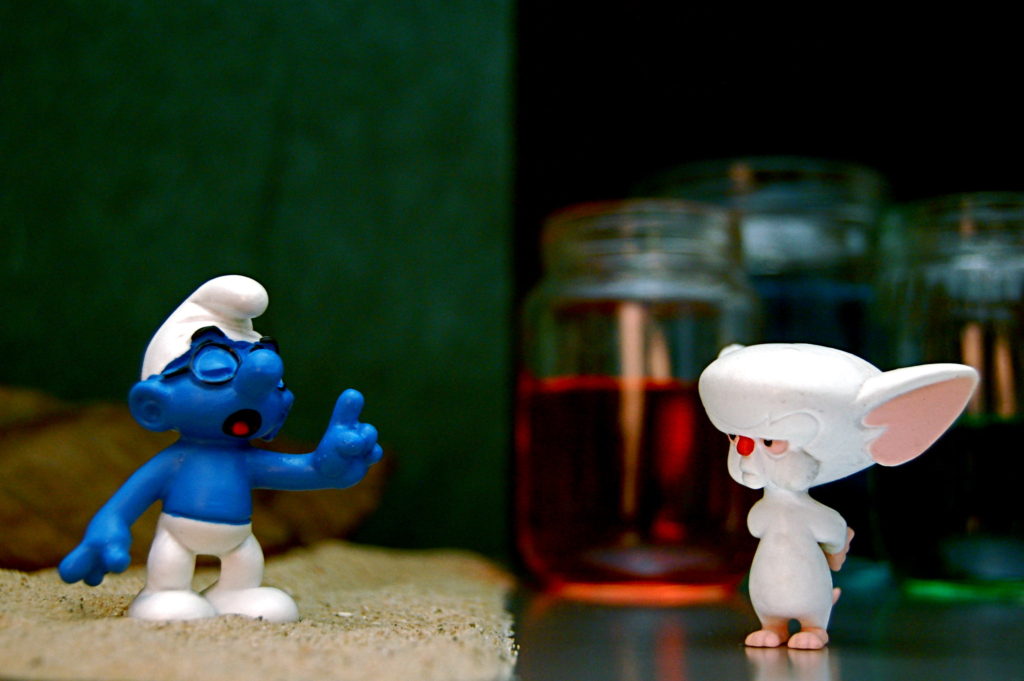
This newsletter was originally published via email on the 27th March 2016. You can also sign up to receive Ice Cream Sundae with the form on the right-hand side column or here (The newsletter format shifted from long to shorter form since).
It’s Easter weekend, time to eat lots of chocolate!
Some bits of celebrating Easter are glorious, particularly as a kid.
I remember Kindergarten days in America, we painted hard boiled eggs in a variety of colours and other fun activities. We were told a magical bunny rabbit wandered around gardens and hid chocolate eggs for children to find. This was all great news; hunting for chocolate items was heaps of fun. Add the anticipation of plenty of chocolate to eat afterwards and Easter becomes one of the most exciting times of year.
We were told a magical bunny rabbit wandered around gardens and hid chocolate eggs for us to find.
I love how you can explain what seems extremely outlandish stuff to children and they’re candid sponges for information. I was wide-eyed at these brand new revelations.
A piece of research from a few years ago showed three year old kids tendencies to be more trusting to what they were explicitly told by an adult than what they could see. I guess audio scepticism only kicks in later. It was a small experiment, though interesting. There are two plastic cups, a red and a yellow one. An adult would then show a three year old that he hides a sticker under the red cup. The kid has to guess where the sticker is. With some children, the adult would lie and explicitly say that the sticker is under the yellow cup. With other children, the adult would place an arrow on the yellow cup without saying anything.
The kids who were told the arrow was under the yellow cup would follow the instructions and not find the sticker. The other kids mostly managed to figure out the arrow was a false lead. At that age we’re biased to believe just about anything we’re told.
I also listened to a fascinating episode of TED Radio Hour about brain science this week. One of the stories was about how we know what other people are thinking, from Rebecca Saxe. Apparently a developmental stage happens between the ages of 3 and 5 years old when we grasp the concept that others don’t necessarily think or like the same things we do. To introduce the idea, they played a portion of an interview with a small child explaining to him that pirates love cheese sandwiches; the excitement of the kid when he said he also loved cheese was infectious. The kid was proud to be like a pirate. I was grinning while listening to the story and walking around London.
At first I thought there might be a link between the Easter Bunny myth and the Native American Indian cultural hero and legendary figure Nanabozho of the Anishenaabe tribes who live(d) spread around the Great Lakes area of Northern America.
Nanabozho is a benevolent trickster figure and strongly associated with the hare or rabbit. He features in many stories, such as stealing fire for humans or giving the porcupine its pricks to protect him against bears.
It turns out the Easter bunny comes from Germany rather than Nanabozho Native American Indian legends.
I first learned about Nanabozho thanks to one of my favourite Franco-Belgian comics series as a child; Yakari. In the fourth tome, the young hero of the series Yakari is introduced to Nanabozo, a giant and sorcerous rabbit spirit. It was translated into English a couple of years ago if you’d like to check it out.
After some research it turns out the Easter bunny tradition comes from German settlers to America in Pennsylvania, apparently no link with the American Indian legends. The first written references can be found in German texts dating from the 17th century.
I still wonder if Nanabozho has any links with other trickster rabbits like Bugs Bunny; that will be a story for another time.
Both rabbits and eggs feature in Easter traditions as symbols of spring and fertility. Typically birds lay eggs and rabbits give birth to large litters in early spring. Rabbits and hares are prolific breeders. They mature sexually at a young age, they can give birth to several litters per year and females can even conceive a second litter while still pregnant with the first.
The name Easter itself is intrinsically linked to spring and fertility: it comes from the Germanic and Old English Goddess Eostre. She’s a Goddess of Dawn, bringing light and spring. In French the celebrations are called Pâques; Latin languages derived their name for Easter from the name of the Jewish Passover celebrations, from the Greek Pascha or Hebrew Pesach.
Also, I found out you can call a group of rabbits a fluffle. A fluffle of rabbits.
After I moved to France, at first Easter tradition seemed to approach as per usual. Other kids were talking about the chocolates they were equally excited about getting and devouring for Easter.
But then I raised my eyebrows at a few points. I heard classmates refer to bells.
Winged, flying Church bells to be more specific.
I inquired about this new and unforeseen piece of information.
These church bells supposedly migrate from France to Rome in the days before Easter Sunday and then flew back carrying chocolate eggs that they then dropped in gardens for us to find.
I thought these new revelations were completely ludicrous. I was pretty sceptical about them.
At six years old, I knew the truth: A bunny hopped around with a basket of chocolate eggs and hid them around the garden. The bunny had a plan and left us with a treasure map.
I’m sure you’ll agree it is vastly more sensible than these silly winged Church bells dropping their chocolates willy-nilly. I was OK to give consciousness to a rabbit but not to a Church bell.
It didn’t make sense. The clash of Easter myths was pretty confusing.
It’s interesting to see what happens when one childhood held belief is confronted to another. For a smile, check out I Used to Believe, a website where people share the stuff they used to believe in as kids.
This dude Jesus confusingly died and then apparently came back to life three days later.
I was even more confused when I learned some people believed that at Easter Jesus died on a cross, came back to life three days later and then died again – or something along those lines. Later on I learned that for Jewish people, this time coincided more or less with the anniversary of the Jewish Exodus from Egypt for Passover celebrations.
From what I’ve read, it’s usually between the ages of 5 and 7 years old that children start asking their parents about myths like Easter bunny, the Tooth Fairy and Santa Claus. Usually another kid at school told them these characters weren’t real.
These kinds of beliefs start cracking around the edges for children alongside the development of logical thinking.
I was still ready to believe in Santa for a while longer but Easter myths had taken a beating.
That said I still really enjoyed the treasure hunting and of course the chocolates so I didn’t ask that many questions, in case the answers might mean less sweets to enjoy later on.
So I’d go and hunt for chocolates, eat them until my belly ached and suspend my disbelief about bunnies and flying Church bells.
The myth of the flying bells comes from the fact that churches in France, Belgium and Netherlands stop ringing a few days before Easter, explained to children by saying they had gone to Rome. I guess they go to Rome because of the Vatican is, rather than where the best chocolates can be found.
I enjoyed the chocolate hunts so much that later on I’d help my parents hide the eggs and make up the clues for my little brother and sister.
Talking about treasure hunts, I recently had a brilliant conversation with Tom Williams of A Door in A Wall for my podcast, they organise murder mystery themed treasure hunting game events in London. I will be publishing that in a few weeks.
In the meantime, you can listen to my conversation with Richard Huntington, who writes in his popular advertising blog Adliterate. Richard is the Group Chief Strategy Officer at Saatchi & Saatchi, one of the largest advertising agencies in the world, and one I used to work at while in Singapore.
I attended a great event this week about the skills gap and lack of diversity in the digital industries organised by Digital Futures. Great speakers included Marc Lewis of the School of Communication Arts, I’ve joined as a mentor and will be volunteering there soon, if you work in the industry I recommend checking them out. I also learned about Apps for Good and Supa Academy from their founders, both exciting initiatives the first for students to create applications that will make a positive difference in the world, and the second to help young people create new businesses.
Finally, if you enjoyed reading this please share it with a friend who will enjoy it too! You can simply forward them the email, or share it to your social networks.
Thank you for reading, have a fantastic Easter weekend!
Till’ next week.
Cheers
Willem



